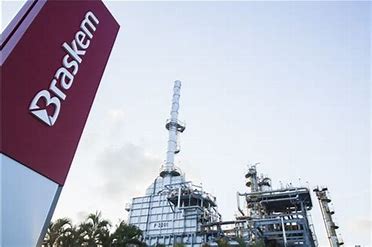Sector is independent of economic policy, profits from external scenario
10/14/2022
/i.s3.glbimg.com/v1/AUTH_37554604729d4b2f9f3eb9ad8a691345/internal_photos/bs/2022/h/W/k9VA93RYKuBHrFtvFATA/24bra-100-bmacro-a4-img02.jpg)
Braulio Borges — Foto: Ana Paula Paiva/Valor
Brazil’s agribusiness sector grew 25 percentage points faster than the country as a whole in recent years and saw income increase threefold compared with states in the Southeast region in the second quarter. Most people involved with this sector voted for Jair Bolsonaro (Liberal Party, PL) in the first round of the presidential election, on October 2, and will probably do it again in the runoff, two weeks from now.
The sector has expanded above the national average in the last two years and was less impacted by turbulences during the latest recessions and the pandemic. This thriving economic reality diverges from that of the country, and the sector’s rising political influence partly explains why people in this field back President Bolsonaro, experts say.
In the first round, former President Luiz Inácio Lula da Silva (Workers’ Party, PT) received 48.43% of the votes, compared with Mr. Bolsonaro’s 43.2%. Mr. Lula da Silva got more votes in the North and Northeast regions. Mr. Bolsonaro won in the Central-West, South, and Southeast regions, especially where the agribusiness sector is dominant – rural regions of Santa Catarina, Paraná, and São Paulo, the Central-West region, the so-called Triângulo Mineiro (in the west part of Minas Gerais) and the southern part of the North region.
Between 2019 and 2022, the territory where Mr. Bolsonaro did better, the same where Brazilian agriculture is stronger, showed a real average growth of 30% higher, while GDP growth in the other regions was much slower, with an income level below the peak seen in the 2011-2014 period, said Braulio Borges, an economist at LCA Consultores.
“This remarkable jump in the real income from agriculture between 2019 and 2022 was not due to a higher volume, but to relative prices much more favorable as a reflection of more expensive agriculture commodities in dollars and a very weakened real against the dollar since mid-2020,” he said.
In volume, agricultural GDP – considering only production, not the whole chain – probably saw an average growth of 1% a year between 2019 and 2022, while the Brazilian GDP expanded by 1.1%, he said.
The agricultural GDP over the 2019-2022 period reached R$2.08 trillion adjusted by inflation, up 29.4% from the previous four-year period, Mr. Borges said. “Even though this is a sector with an 8% share in Brazil’s GDP, this is a spectacular jump. This means R$472 billion more compared with the 2015-2018 period in terms of income,” he said.
Looking at the rest of the economy, excluding sectors such as public administration, imputed rent, and financial transactions, which would account for 60% of the Brazilian GDP, the growth was much lower, at 3.8%.
While the high price of commodities and the weakened real favors farmers, it means more expensive food and higher inflation for the rest of the population, the economist said. The agriculture sector accounts for 8% of the Brazilian GDP but can reach 28% if services and the whole chain are included.
This is a different Brazil, said Mr. Borges. “A country that queues up to buy R$500,000 pickup trucks,” he said. “A Brazilian Texas, more conservative and strengthened by the agribusiness sector. It starts in the north of Rio Grande do Sul, and goes through Santa Catarina, the Central-West, and the new frontier in the Northeast. This region has grabbed most of this income gain and voted massively for the current administration.”
Even though voters associated this situation with the Bolsonaro administration, historical and cyclical factors explain the recent bonanza in this part of the country, said Sergio Vale, the chief economist at the consultancy MB Associados.
“Over the last four decades, the states with the greatest weight of agribusiness have grown the most,” said Mr. Vale. “There are two main reasons for that. One is that agribusiness ended up integrating more with the world [than other sectors, like industry]. The other is prices, which led agriculture-producing states to have a higher real income growth.”
Mato Grosso and Mato Grosso do Sul are expected to grow above 5% this year. The other agriculture-producing states in the Central-West, North, and Northeast regions will also perform above the country’s average, MB Associados projections show.
Mr. Vale’s calculations, based on figures from the Brazilian Institute of Geography and Statistics (IBGE), show that between 1986 and 2023 Mato Grosso will grow 695%, compared with Brazil’s 108.7%. From 2012 to now, the per capita GDP of the Central-West states will probably have expanded by more than 10%, compared with Brazil’s 4.7%.
This year, the states where income grew the most in the second quarter, compared with the same period in 2021, are those with a greater share of agribusiness in the local economy.
This bonanza is seen not only in Brazil, he said, as it has benefited all the agricultural commodity-exporting countries.
In his view, linking this income boom to the Bolsonaro administration, therefore, sounds exaggerated. “It’s not about fiscal policy, reforms, or Bolsonaro. It has to do with agricultural commodities. They are driving this growth,” said Mr. Vale.
The economist divides Brazil into three major categories: the South and Southeast regions, which have developed and, in a way, stagnated; the Central-West region and the new agricultural frontier, which are getting rich through agribusiness; and the Northeast, which could become an important hub, especially due to its proximity to markets such as the European Union.
Messrs. Borges and Vale believe that, despite the sector’s majority association with Mr. Bolsonaro, a victory of Mr. Lula da Silva could ease the pressure on the environmental front, favoring exports to markets like the EU.
“There is a backward-thinking segment of agribusiness that considers that environmental protection is an obstacle. Nothing could be more wrong: the Mercosur-EU trade agreement was put on hold precisely because [Brazil’s] environmental policy is moving backwards,” said Mr. Borges. “And this agreement would greatly expand the market for Brazilian agricultural products in Europe.”
The regions where agribusiness is predominant have experienced less economic turbulence in recent decades, said Felippe Serigati, a researcher at the Agribusiness Center of Fundação Getulio Vargas (FGV Agro).
“From 2000 to now, the agribusiness universe was by far the economic sector that grew the most. It was an average growth of 3.5% per year, compared to the Brazilian economy’s 2.3%,” he said.
“The regions where agriculture is the predominant economic activity and was able to boost regional services and employ most of the local labor force did not feel the impacts of the crises we have gone through since the 2000s with the same intensity,” he said.
He cites as examples the 2015-2016 recession and the crisis caused by the Covid-19 pandemic, which had a greater impact on industry and services.
In addition to the growing economic importance, in the last 20 years the sector has gained political relevance, both in terms of representation in Congress and in the search for political support from the sector’s representatives and in defending the interests of the Legislative and Executive branches’ agenda, the expert said.
“From 2000 on, the sector has clearly gained a greater political space and more prestige. And it has a greater capacity for mobilization. The agribusiness agendas today have greater convergence with a larger fraction of the Brazilian population,” he said.
In the first round of the election, 70% of the members of the Parliamentary Agricultural Front (FPA) who ran for reelection to the Chamber of Deputies won and will have a new four-year term. Of the 241 members in the lower house, 218 ran for new seats and 153 were reelected.
A survey by FPA indicates that the group will have at least 158 representatives in the new legislature. The list only accounts for former members who were out of office and are returning to the lower house, and the continuity of reelected members.
Despite the substantial number of FPA members, important representatives from the agricultural sector will be left out in 2023, including Neri Geller (Progressive Party, Mato Grosso, MT), a former Agriculture minister and vice-president of the FPA, and Aline Sleutjes (Social Liberal Party, PSL, of Paraná), the group’s institutional coordinator.
FPA, a strong ally of President Bolsonaro that typically has a great presence in the lower house, is expected to also grow in the Senate.
With the return of former members who were out of the office and the victory of allies who occupied other positions, FPA projects at least 40 senators from 2023 onwards – out of 81. New members may raise this number to 45 seats. In the last legislature, there were 39 senators aligned with this group.
The group, reinforced by names like Tereza Cristina (PP of Mato Grosso do Sul), a former minister of Agriculture, can be crucial for passing measures dear to the agribusiness sector that are stalled in the Senate, such as changes in how environmental permits are granted, in land regularization, self-control of agricultural inspection and registration of pesticides.
(Rafael Walendorff contributed to this story)
*By Marsílea Gombata — São Paulo
Source: Valor International




/i.s3.glbimg.com/v1/AUTH_37554604729d4b2f9f3eb9ad8a691345/internal_photos/bs/2021/b/B/BNE4NpQIqvxfSq57ZbAA/22emp-100-bala-b1-img01.jpg)
/i.s3.glbimg.com/v1/AUTH_37554604729d4b2f9f3eb9ad8a691345/internal_photos/bs/2022/a/q/emRzBtRoidrrzYMseFzw/vitale.jpg)
/i.s3.glbimg.com/v1/AUTH_37554604729d4b2f9f3eb9ad8a691345/internal_photos/bs/2022/F/k/xHiBvLTzAILLlCa4C4Aw/11agr-200-robo-b7-img01.jpg)
/i.s3.glbimg.com/v1/AUTH_37554604729d4b2f9f3eb9ad8a691345/internal_photos/bs/2021/d/u/dUm8CFT8GbJpjwStl1AA/54649968-eco-brasilia-bsb-df-04-04-2016-banco-central-na-foto-sede-do-banco-central-do-brasi.jpg)
/i.s3.glbimg.com/v1/AUTH_37554604729d4b2f9f3eb9ad8a691345/internal_photos/bs/2022/G/p/Ur3jb4TYeSIS1OJFoQIw/051022poyry24.jpg)
